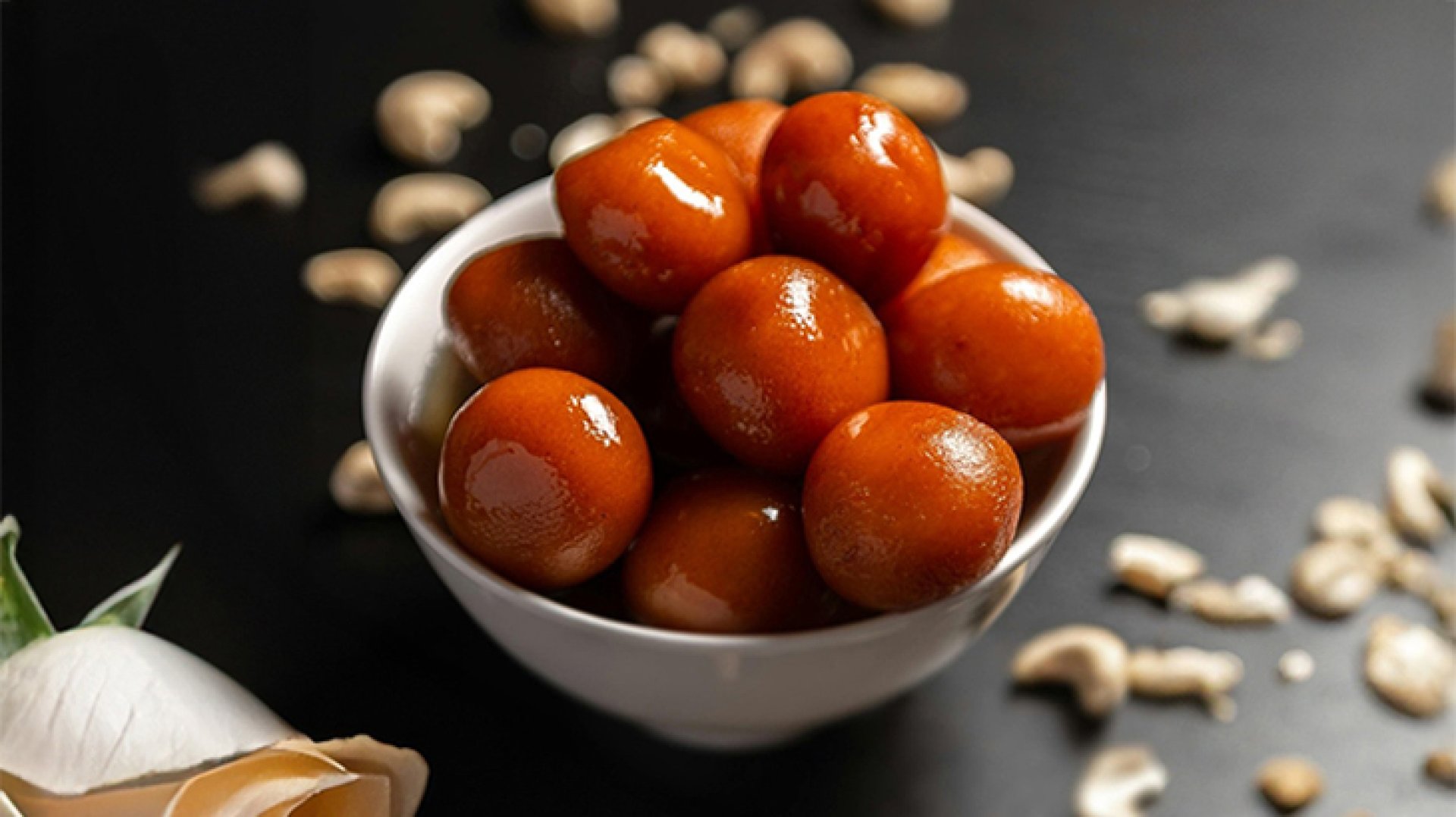Gulab Jamun

Among the vast array of sweets across the globe, one particular Indian delicacy stands out for its widespread recognition and charm: Gulab Jamun. This traditional Indian dessert is renowned worldwide, not only for its appealing spherical brown shape but also for its distinctive flavor and intriguing cultural history.
Gulab Jamun is primarily made from milk, typically buffalo milk, mixed with a small amount of flour. This mixture is rolled into small balls, then deep-fried in oil or clarified butter (ghee) until they turn a beautiful golden brown. Subsequently, these fried balls are immersed in a meticulously prepared sugar syrup, infused with fragrant rosewater and aromatic spices like cardamom and saffron. The result is a dessert that is exquisitely sweet, deeply moist, and wonderfully aromatic, making it incredibly appealing.
The Origin of the Name Gulab Jamun and its Persian Roots
The name Gulab Jamun is derived directly from the dessert's characteristics and ingredients. The word Gulab (from Persian, a term for rose adopted in India) signifies rose, referring to the fragrant rosewater syrup. The word Jamun comes from the desserts round shape, which resembles the jamun fruit, also known as black plum, native to India. Thus, "Gulab Jamun" literally means "rose-soaked berry" or "rose-flavored plum," perfectly describing this delightful sweet.
The earliest origins of Gulab Jamun trace back to medieval Persia, where Persian culinary culture profoundly influenced India, particularly during the Mughal Empire in the 16th century. The Mughal dynasty, which ruled over a large part of the Indian subcontinent, introduced Persian cooking techniques and key ingredients such as roses, saffron, and various nuts into Indian cuisine, leading to a rich and fascinating fusion of culinary traditions.
Despite its Persian ingredient roots, Gulab Jamun is believed to have been first developed in the Indian subcontinent. Legend has it that Gulab Jamun originated in the kitchens of Emperor Shah Jahan, the builder of the Taj Mahal. It is thought to be an adaptation of an earlier Persian sweet called Luqmat al-qadi (Judges Bite), which consisted of fried dough balls drizzled with honey. However, Mughal royal chefs refined this recipe, adding milk solids and soaking the fried balls in rose syrup, transforming it into the tender, aromatic Gulab Jamun known today.
Gulab Jamun in Indian Culture and Festivities
In India, Gulab Jamun is an indispensable dessert and is frequently featured at festivals and significant celebrations, including Hindu and Islamic religious events, weddings, and birthdays. It symbolizes joy, festivity, and sharing within families and communities.
Furthermore, Gulab Jamun is considered an ideal sweet offering for deities, particularly Goddess Uma Devi, Goddess Durga, Goddess Kali, and all Mahadeva and Mahadevi (great gods and goddesses). This is because Indians believe that flowers represent the feminine divine. Therefore, Gulab Jamun, with its rose-infused syrup, is predominantly used in the worship of female deities, highlighting the deep connection between food, belief, and religion.
The Regional Diversity of Gulab Jamun
Over the centuries, Gulab Jamun has gained immense popularity across India, becoming one of its national desserts. Different regions of India have infused their unique flavors and preparation methods, resulting in a fascinating variety of recipes:
- In Bengal: Gulab Jamun is known as Pantua. It is often made using Chhena, a fresh cheese prepared from buffalo or cow milk, and Khoya, a widely used milk solid in the Indian subcontinent. This gives it a distinct texture.
- In Southern states: Gulab Jamun often incorporates coconut or palm sugar, blending local ingredients with the traditional sweet.
- Additionally, Gulab Jamun exhibits varying colors across regions. Some areas prefer a darker, almost black hue, achieved by frying the dough balls for a longer duration to develop a richer flavor and denser texture. Other regions favor a beautiful golden color.
Gulab Jamun in the Modern Era: Adapting to Global Tastes
Over time, the popularity of Gulab Jamun extended far beyond India. It gained recognition in various parts of the world, including the Middle East, Southeast Asia, Africa, and the Caribbean. This widespread diffusion is largely attributed to Indian diaspora communities who carried their recipes and culinary traditions with them as they migrated, showcasing the significant role of migration in spreading food culture.
Influenced by modern culinary trends, Gulab Jamun has continuously evolved, leading to even greater diversity. Contemporary chefs have experimented by adding chocolate, stuffing them with dried fruits, or even incorporating Gulab Jamun into Western-style desserts such as cheesecakes and ice creams, adding new dimensions and exciting flavors.
Today, Gulab Jamun is a beloved dessert globally, with numerous variations and adaptations developed to cater to diverse consumer preferences. These include using milk powder instead of buffalo milk, infusing flavors with different fruits, or garnishing with nuts, ensuring that this sweet treat remains cherished and accessible to everyone.
You can find all the necessary components at all Rimping branches.


